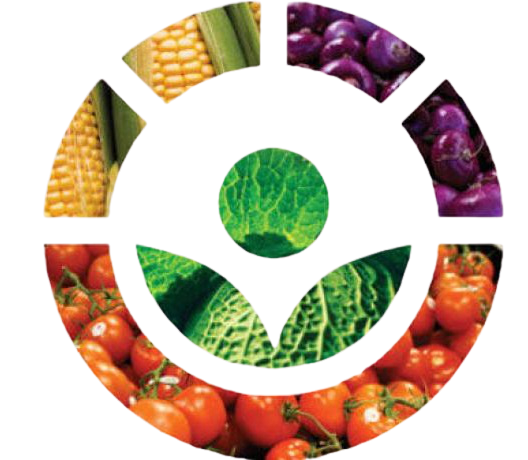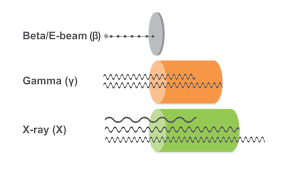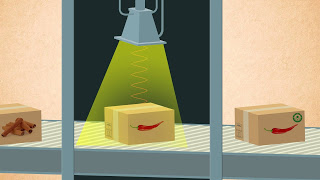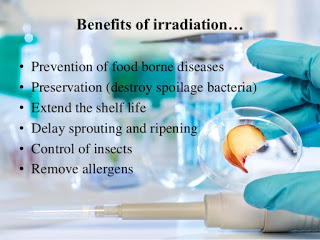Some misconceptions about irradiated food
If you ask consumers whether they are more afraid of exposing their food to nuclear radiation or eating food that is contaminated with pathogens such as E. coli, Listeria, or Salmonella, you would be surprised at how many people would choose the former. Interestingly, this fear is largely irrational, stemming from deep-rooted misconceptions about the safety of food irradiation. Lack of understanding and misinformation that goes along with the word ‘radiation,’ are largely to blame for consumer skepticism.

Why is food irradiation misunderstood?
There are four (4) main reasons why food irradiation has not gained consumer support:
- As mentioned above, the term “irradiation” can be concerning because consumers perceive it to be associated with radioactivity.
- Consumers are becoming increasingly more cautious with avoiding foodborne illnesses, while their causes, incidence, and prevention are largely misunderstood.
- The media and the majority of health professionals are largely unaware of the benefits of food irradiation.
- Anti-irradiation campaigns have been conducted by activist groups surrounding beliefs about food production, nuclear power, international trade, and the introduction of new technologies (Sommers, 2006).

What does science say about irradiation?
Irradiation can be used to control the following:
insect and microbial infestation
inhibit sprouting
delay ripening
reduce pathogenic bacteria such as Salmonella, E. coli, and Listeria.
This can be carried out in three ways: Gamma (γ)rays, x rays, and high-velocity electrons.
Gamma (γ)-rays have a half-life of 5.3 years, making them the most common food irradiation method. They are emitted from radioactive elements, e.g. 60Co (Cobalt) and 137Cs (Cesium). To kill food microorganisms, the food is moved on a conveyor belt past a sealed radioactive source, such as 60Co, for a sufficient time to ensure an average dose of 10 kilogray (kGy).
Exposure of food to a γ-emitting isotope does not make the food radioactive, just like exposure of food to light (a form of electromagnetic radiation) does not make the food emit light. There is no way the γrays can make other atoms in the food being irradiated, radioactive (Shaw, 2018).
Lastly, high-velocity electrons can also be used for irradiation. An electron accelerator that produces high-velocity electrons and delivers more than 1010 Gy/s means that food only needs to be irradiated for fractions of a second to kill microorganisms (Shaw, 2018).
All three methods achieve the same result: food that it free of pathogenic microorganisms, such as E. Coli, Salmonella, and Listeria. If the product requires packaging, food is generally packaged before irradiation, in order to prevent the sterile product from suffering re-contamination during the packaging process (Shaw, 2018).

Are there legitimate concerns?
Arguably, the most concerning issue in the context of consumer health is the toxicity of free radicals in irradiated food. However, the nature of free radicals (extreme reactivity) means that they have extremely short half-lives in food (they react quickly with other food molecules), and that they will be very unlikely to be present in the product when it is consumed.
Food irradiation can also change the composition of treated food by altering its nutritional components, such as vitamins and minerals. Fewer vitamins and minerals do not make food unsafe; however, it does make it less effective nutritionally. It is important to note that other methods of food preservation have the same effect. For example, both freezing and thermal processing can cause a significant decrease in food’s vitamin levels (Shaw, 2018).

What is the key to consumer acceptance?
Education. Consumer studies show that if consumers are given even a small amount of accurate information about food irradiation, they are willing to buy irradiated foods and often prefer them to foods that have been treated by conventional means. Studies have also shown that information providing consumers with information about the true nature of irradiation and its benefits is correlated to changes in consumer attitudes toward irradiation (Sommers, 2006).
Therefore, false beliefs – such as that irradiated foods are rendered radioactive, must be countered with a basic scientific understanding. It is important that consumers are educated on the facts and benefits of irradiation (Zheng, 2019).
Does irradiation eliminate the need for traditional food safety processes?
No. However, when irradiation is used in combination with other technologies, as well as an effective Hazard Analysis Critical Control Points (HACCP) program, irradiation becomes a highly effective and viable sanitary and phytosanitary treatment for food and agricultural products. Irradiation is one of the most effective interventions available because it significantly reduces the dangers of primary and cross-contamination while only minimally affecting nutritional attributes (Sommers, 2006).
SERVICES OFFERED:
Let our extensive background and experience in food safety and quality management processes help you navigate the regulatory transition under the new Health Canada and CFIA rules. We offer assistance with:
Development of Preventive Control Programs (HACCP-FSEP, BRC, SQF), specific to your product/operation types
Development of robust environmental monitoring programs geared towards microbial control and spoilage prevention
Thermal and non-thermal process monitoring setup and validation
Call us for a free consultation. Direct line (+001) 647-963-0182.
References:
Shaw, Ian C. Food Safety: The Science of Keeping Food Safe, Second Edition. John Wiley & Sons Ltd., 2018.
Sommers, C. H., Wiley InterScience (Online service), & Fan, X. (2006). Food Irradiation Research and Technology. Ames, Iowa: Wiley-Blackwell.
Zheng, Y., Bolton, L. E., & Alba, J. W. (2019). Technology Resistance: The Case of Food Production Processes. Journal of Public Policy & Marketing, 38(2), 246–262.